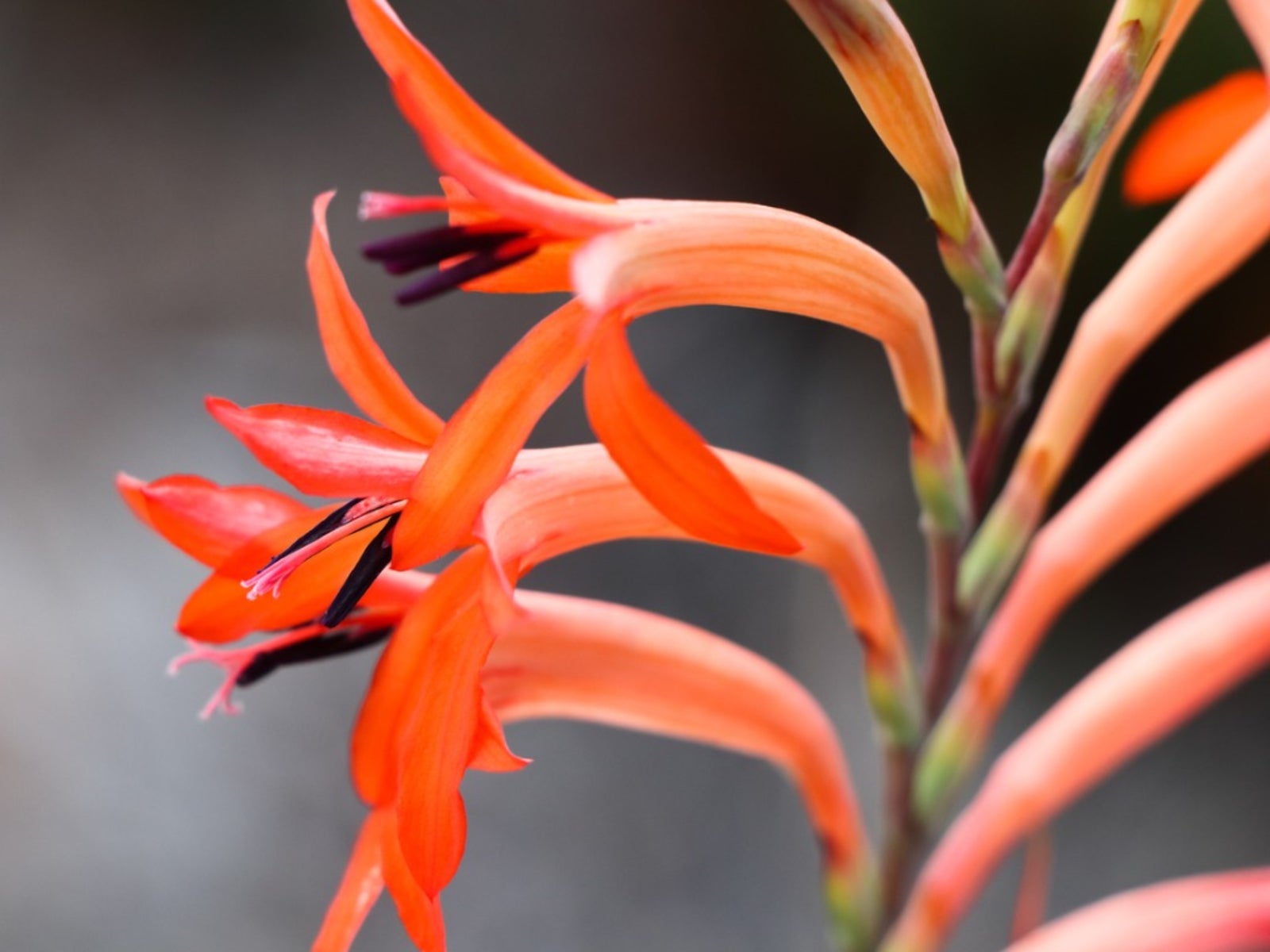Growing Watsonias: Information On Watsonia Bugle Lily Plants


Watsonia bulbs, also known as bugle lily plants, are related to the Lily family and native to South Africa. While they prefer warm climates, they can survive in USDA zone 8. These delicate flowering bulbs usually come in a range of orange and peach hues. As a garden plant, Watsonia blooms in midsummer, providing subtle coloring to a flower border and attracting both hummingbirds and pollinating insects.
Watsonia Bugle Lily Plants
These lovely flowers rise on spikes from thick sword-like leaves about 18 inches (46 cm.) long. Flowers soar almost a foot (31 cm.) above the foliage and may be orange, red, pink, coral, white, or yellow. Blooms are 3 inches (8 cm.) long and last several weeks, making them an attractive cut flower. Watsonia bulbs are actually corms. These are modified roots that act as storage organs, much like bulbs or rhizomes. In cooler zones growing Watsonias as perennial plants will require overwintering of the corms indoors to protect them from freeze injury.
How to Plant Watsonia Corms
Growing Watsonia is easy enough. The garden plant Watsonia will thrive in well-drained soil where there is full sun exposure. Prepare a bed in fall by adding a generous amount of compost and working it in to a depth of 6 inches (15 cm.). Bury corms 4 or 5 inches (10-13 cm.) deep, spaced 12 inches (31 cm.) apart. Cover them with the amended soil and tamp down lightly. In zones below USDA 8, start corms in a peat and potting soil mixture in a moderately lit room, where temperatures exceed 60 degrees F. (16 C.). Watsonia bulbs, or corms, will rot in soils that don't drain well. Ensure adequate drainage in any location where you want these spectacular blooms to grow.
Care of Watsonia
The proper care of Watsonia will reward you season after season with little effort. While corms can rot in sodden soils, they do require supplemental water during the growing season. Keep soil moderately moist. Cut the spent blooms off at the end of the season but leave the green leaves to continue to gather solar energy to fuel the next season's flowers. Fertilize in very early spring with a good bulb fertilizer. Be cautious in warmer zones, as the plant can become invasive in much the same way Crocosmia can spread and invade other plants. In cool zones, cover the dormant clumps with a heavy layer of mulch and then pull it away in spring as soon as the first green leaves break the soil.
Growing Watsonias from Division
These beauties are so glorious it is tempting to want to share them with fellow garden lovers. Division is necessary every few years or when the clump begins to reduce bloom formation. Dig up the clump in fall, cut it into several sections with healthy roots and corms and replant. Share the clumps with friends and family or dot them around your property. Care of Watsonia divisions is the same as established corms. They will bloom lightly the first year but bloom thickly the next season.
Gardening tips, videos, info and more delivered right to your inbox!
Sign up for the Gardening Know How newsletter today and receive a free copy of our e-book "How to Grow Delicious Tomatoes".

Bonnie Grant is a professional landscaper with a Certification in Urban Gardening. She has been gardening and writing for 15 years. A former professional chef, she has a passion for edible landscaping.
-
 Want The Longest Lasting Hydrangea Flowers? Grow These 8 Panicle Hydrangea Varieties
Want The Longest Lasting Hydrangea Flowers? Grow These 8 Panicle Hydrangea VarietiesFor ornamental shrubs that deliver the longest flowering seasons with plush blooms and delicate hues, these panicle hydrangea varieties are essential in your yard
By Tonya Barnett
-
 Moody Blooms For Spring: 8 Types Of Black Flowers To Add Drama To Spring Displays
Moody Blooms For Spring: 8 Types Of Black Flowers To Add Drama To Spring DisplaysFrom midnight burgundies to inky violets, several types of black flowers can enrich and embolden a spring display. Try these brooding bloomers for a moody garden
By Tonya Barnett